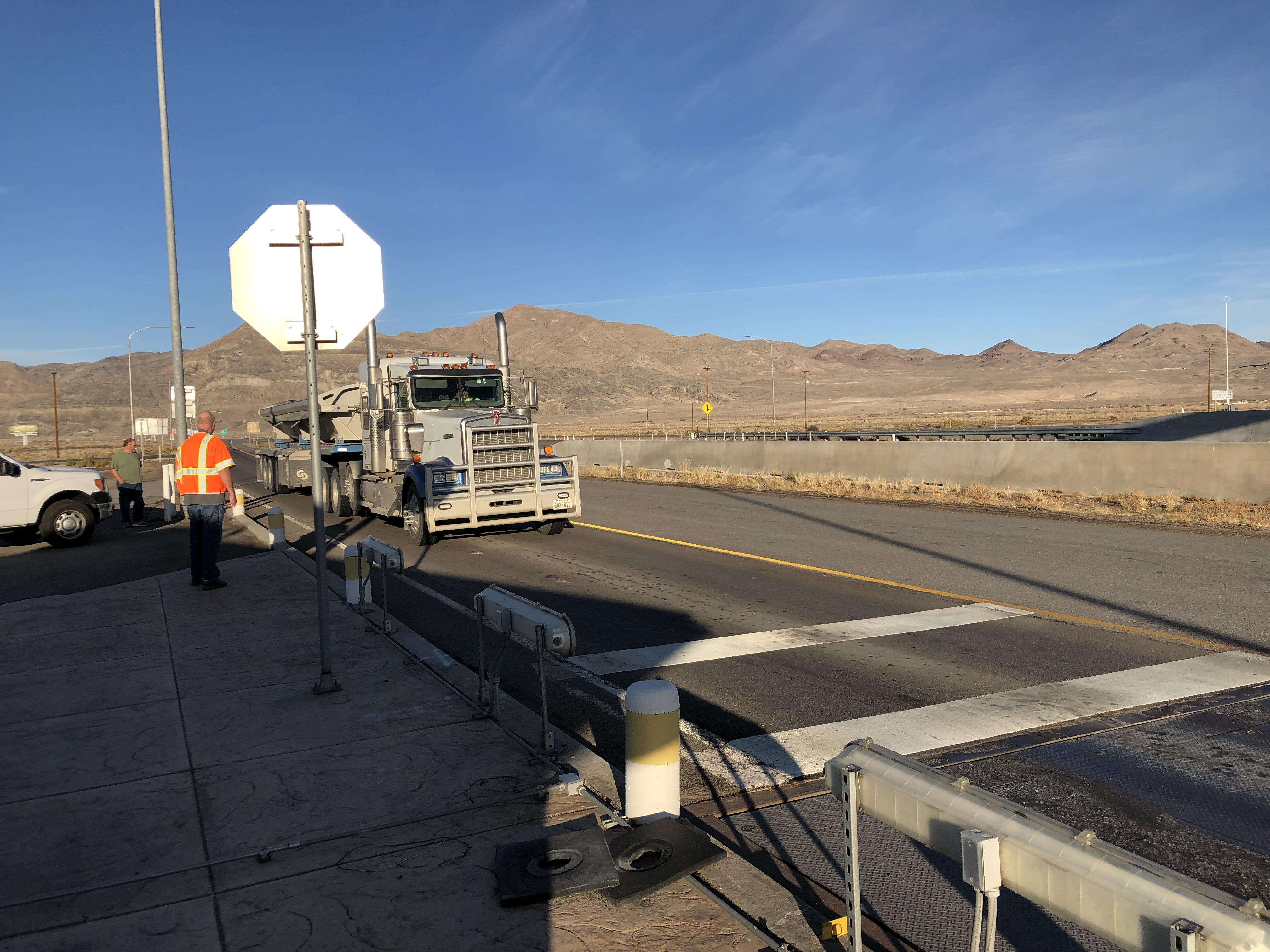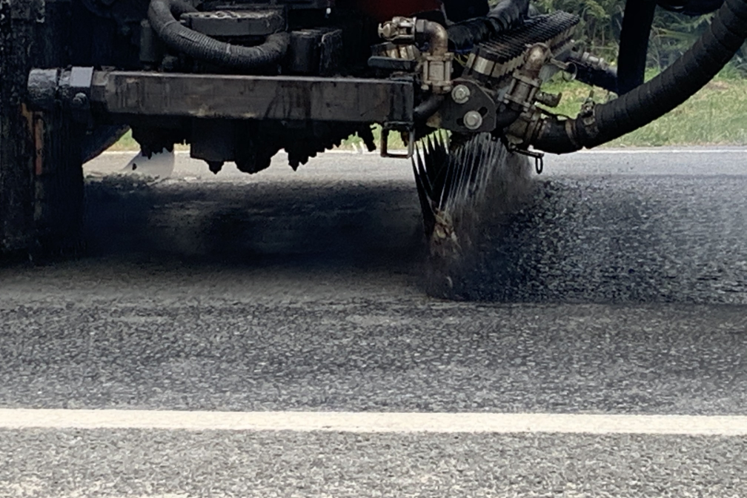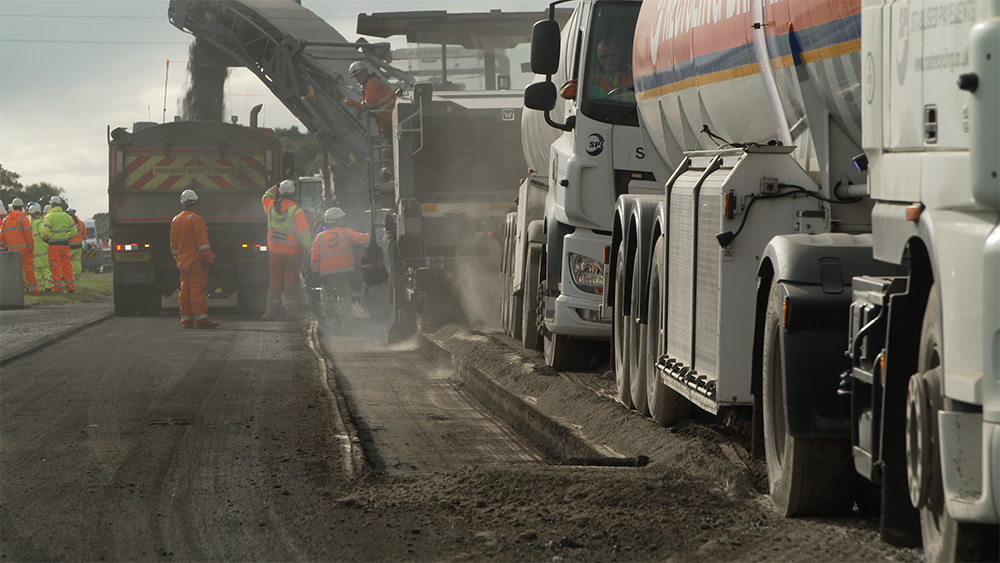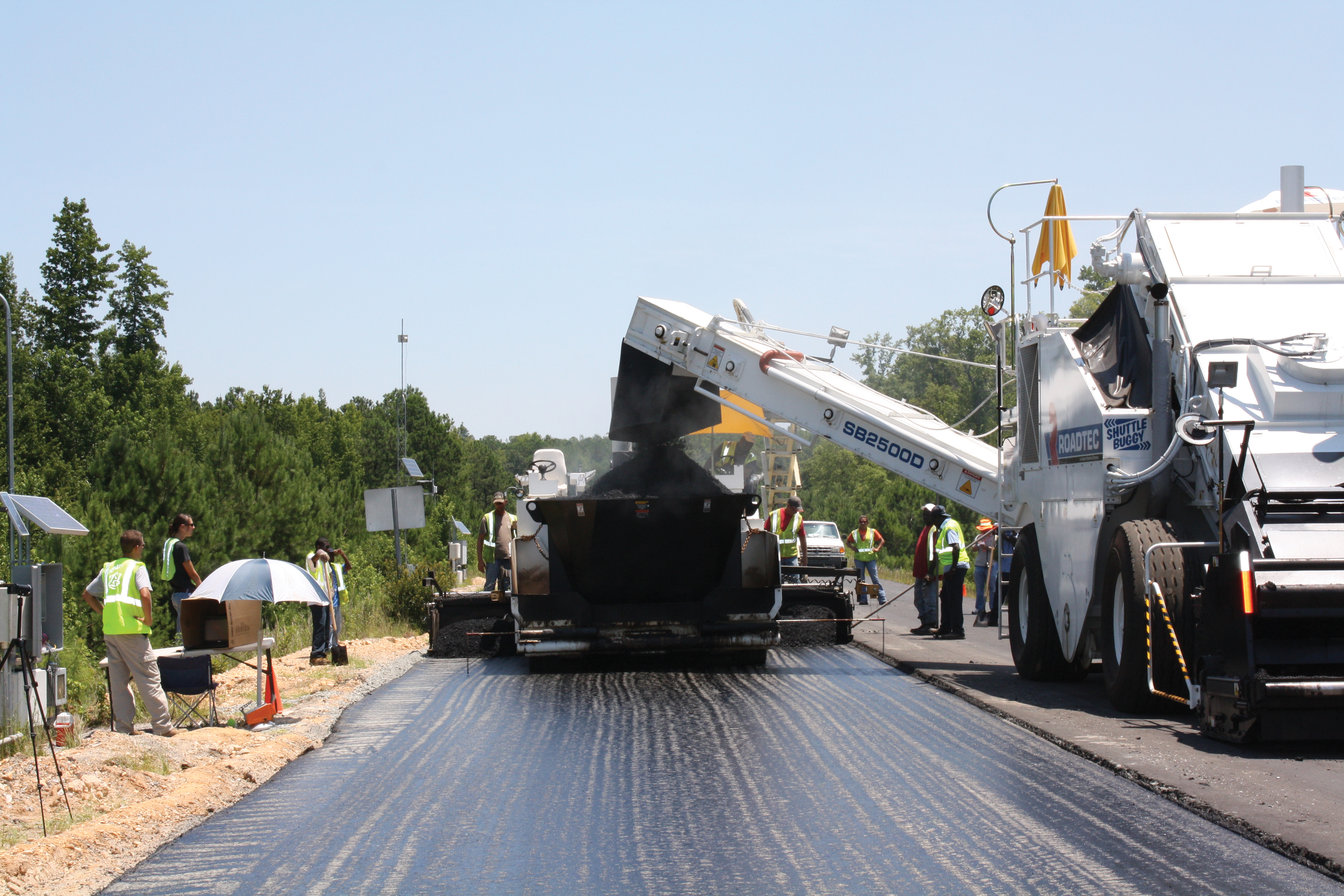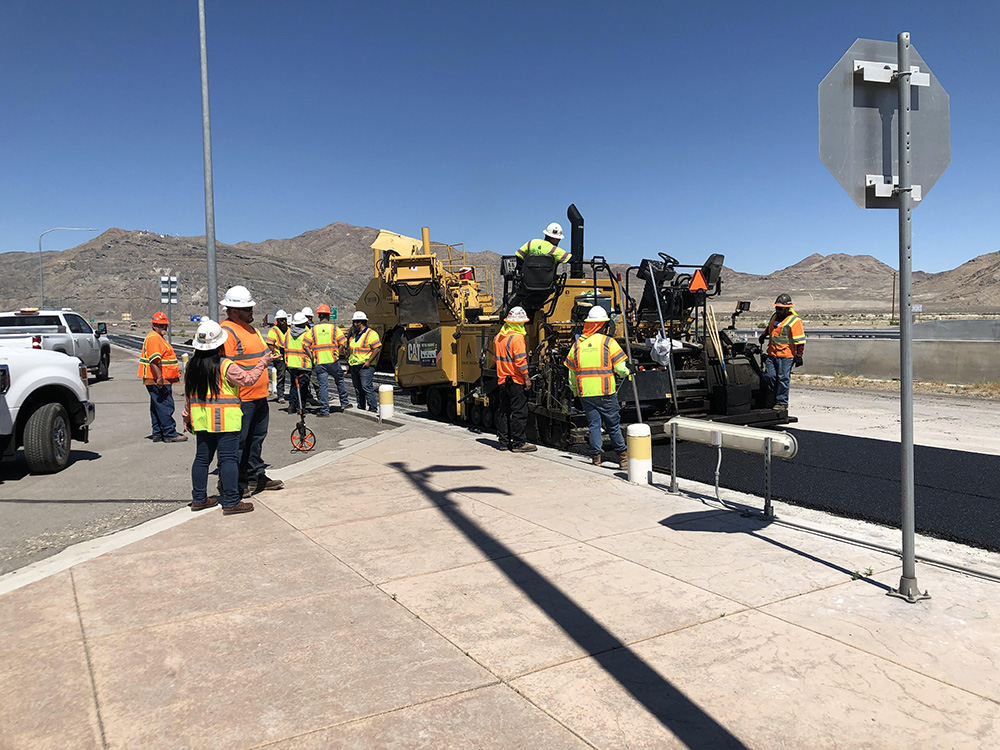
Utah pioneers 15cm thicklift in US
In June 2021, Utah Department of Transportation (UDOT) laid a 15cm single-lift pavement on a heavily trafficked part of the Interstate 80 highway in Wendover, by deploying highly modified asphalt in a low void mix. If its durability is as good as it looks so far, this ‘thicklift’ system could reduce maintenance costs and disruption at some of the State’s most challenging locations.
Contractor Staker Parson laid the asphalt at the point of entry to the I-80, which sees an average of 7,600 vehicles/day. Over half the vehicles are trucks which are slowing down for a weigh point and then accelerating away at the other side, with summer temperatures reaching 40°C. Using a standard specification, this area would be showing rutting by now, but the thicklift is looking good.
There are multiple benefits to the thicklift system, says UDOT asphalt materials engineer Howard Anderson who has been studying polymer modification since his university days: “If you can pave what is normally two lifts in one lift, you can do it pretty much twice as fast,” Anderson explained.
Faster paving means more production for contractors, less disruption for road users and lower traffic management costs. There are cost savings due to the elimination of the tack coat between layers, and quality benefits from eliminating the joint between lifts. Anderson expects that quality control and assurance costs can also be lowered.
Obviously, the cost of the additional polymer must be factored in. For the Wendover trial, the cost of the asphalt was around US$135/tonne, which is more than SMA or HMA, which can cost up to $108. Anderson does not see $135 as excessive for just 298tonnes and predicts that for larger volumes the cost could come down. He sees thicklift as a “win-win” situation, with the price eventually coming in similar to SMA, contractors getting uplifts on their margins and states spending far less on maintenance and rehabilitation.
This project was the culmination of several years of trials and research into highly modified asphalt, a mix containing binder with a high proportion of polymer. UDOT drew on experiences from other states and institutions: South Carolina has paved 127mm-deep thicklifts and sponsored research at the National Center for Asphalt Technology (NCAT) which looked at thicklift pavements. Anderson was also interested in Kraton’s dense grade HiMA highly modified asphalt, containing 7.5% of its SBS polymer which was trialled in a 165mm-deep lift in Brazil back in 2011.
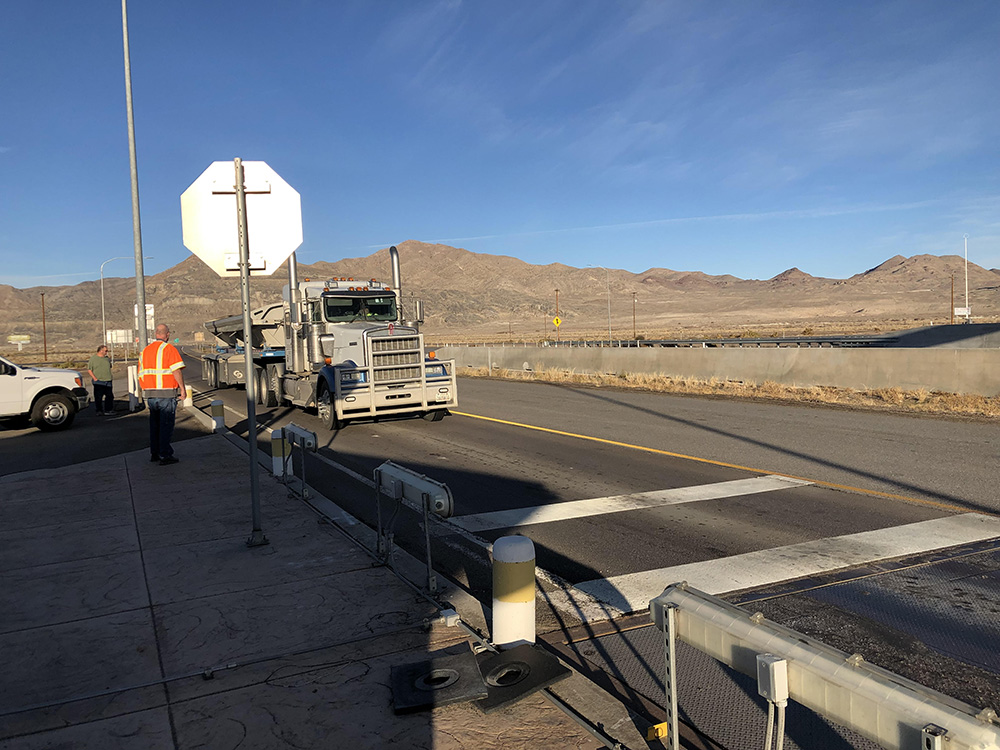
UDOT first laid the highly modified binders in standard mixes and lifts on two roads in Utah around four years ago. This proved the binder could be used – although it also showed that it was difficult to pump via 10cm lines due to its stickiness, said Anderson. Tests on asphalt mixes with high percentages of binder showed that they were extremely rut resistant.
For this project, UDOT specified a higher density than for standard mixes: 96% for the top 76mm and 94% for the bottom three, which the contractor achieved, apart from at a spot where a truck breakdown delayed supply. The mix is a 12.5mm nominal maximum (NMAS) Superpave mixture using a PG 76-34 binder. Staker Parson added 0.5% Evotherm 3G, a warm-mix additive, to aid compaction. Brody Young, regional quality manager for Peak Asphalt which supplied the modified bitumen, said it contained a combination of SBS polymers, over 7%, but that the technology was a “trade secret”.
Before Staker Parson laid the test section in Wendover, it laid a 90tonne pre-trial test section at its facility near Salt Lake City. This allowed the contractor to check that it was achieving the required densities, comparing nuclear gauge test results to results from cores taken later. It also showed just how much heat the thicklift retained, causing some parties to call for the main trial to be called off, said Anderson; the trial did go ahead, although the re-opening of the road was delayed to allow for cooling.
With this first thicklift section in Utah behaving well, UDOT has ambitions to do more. Anderson has identified two concrete ramps – on I-15 and I-215 – which he plans to replace with a thicklift of 190mm with 38mm of SMA on top. He hopes that not only will this be far faster to install than a replacement concrete ramp, but it will last far longer with only the SMA requiring rehabilitation. The low void, highly modified asphalt could also be useful for thin lifts, says Anderson, because they will vastly improve the density, reducing the need for so many cores to check for low density spots.
There has already been much interest in Utah’s thicklift success from other States: Anderson has spoken to peers in Colorado, Arizona, Texas and Idaho already. No doubt there will be others too.
Epoxy resins for resilient roads in Ethiopia
Using epoxy bitumen in chip seals could significantly increase the life of high-volume roads in low-income countries and make them more resilient to climate change impacts. The technology, which has been developed and used in New Zealand, will be trialled in Ethiopia this year.
Modified epoxy chip seal is one of three technologies under investigation in the 18-month Climate Resilient Sustainable Road Pavement Surfacing (CRISPS) programme; the others are modified epoxy asphalt surfaces and fibre mastic asphalt. The programme is being led by the University of Birmingham in the UK, in collaboration with the University of Auckland, the Universiti Putra Malaysia (UPM) and the International Road Federation (IRF).
New Zealand and the Netherlands have been interested in using epoxy bitumen since the early 2000s, when they worked on a research programme together, explained David Alabaster, principal pavement engineer at New Zealand transport agency Waka Kotahi, at a seminar in December 2021, hosted by the IRF. Engineers observed that the material had been installed on bridge decks and was still intact 40 years later.
“There have been bridge decks that have survived for 40 years so there’s a track record of durability in these materials,” said Alabaster.
Those initial studies showed that epoxy bitumen had several advantages over a standard binder: it proved to be more resistant to rutting; to low temperature crack initiation; and to surface abrasion from tyre action, even after oxidation. Oxidation is a major problem in New Zealand, said Alabaster.
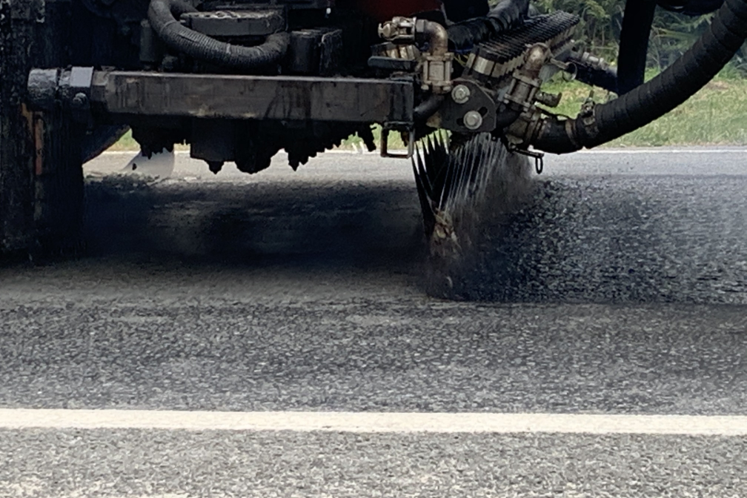
Epoxy bitumen is a two-part system which has to be used relatively quickly after mixing. Part A is epoxy resin and Part B is a curing agent which is mixed into the bitumen.
Having perfected the manufacture of epoxy bitumen mixes, New Zealand began trialling its use for porous asphalt. Its standard material, though safe and quiet, was only lasting between seven and eight years and costing between NZ$20 and NZ$30/m2 to replace.
“Testing suggested we could get to a 40-year life with the way we were doing it for an extra NZ$6/m2 which is a tiny amount for the increase in performance,” said Alabaster.
From 2016, normal production of the epoxy bitumen began, with 25% epoxy. New Zealand has laid over 100,000m2 on all the busiest highways, and the country’s first home-manufactured bitumen blend has been approved. Having come on a fact-finding mission to New Zealand, Netherlands contractor Duravermeer laid the first epoxy modified material on a ringroad in Boekel in 2021.
New Zealand then began looking at modified epoxy chips seals to tackle the problem of flushing, where binder rises out of the surface leading to a decrease in skid resistance and sometimes damage to the surface. After initial hand trials, researchers built a modified spray bar with two sets of nozzles, one for the part A and the other for the Part B.
To date, New Zealand has laid the modified epoxy chip seal on two trial sites which have been performing significantly better than standard materials in terms of texture loss. The next step is the trials in Ethiopia.




